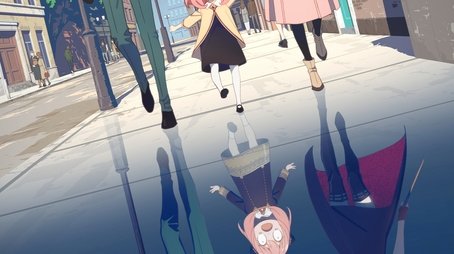
Ask Your Own Question
What is the plot?
The episode begins with Lisa Simpson feeling lonely and disconnected from her peers at Springfield Elementary. She notices a new girl, a free-spirited and confident student named Sophie, who arrives on the school bus. Lisa is intrigued by Sophie's boldness and unique style, which starkly contrasts with her own more reserved demeanor. As the bus ride progresses, Lisa observes Sophie effortlessly making friends and capturing the attention of the other kids, which deepens Lisa's feelings of inadequacy.
Later, Lisa decides to approach Sophie during lunch, hoping to befriend her. However, she struggles to find the right words and feels intimidated by Sophie's outgoing personality. Despite her initial hesitation, Lisa manages to strike up a conversation, and they bond over their shared love of music. Sophie invites Lisa to join her and her friends for a weekend outing, which excites Lisa but also makes her anxious about fitting in.
As the weekend approaches, Lisa prepares for the outing with Sophie and her friends. She tries to adopt a more adventurous persona, even borrowing clothes from Marge to appear more stylish. However, when the day arrives, Lisa's nerves get the best of her, and she worries that she won't be accepted by Sophie's group. Despite her fears, she decides to go, hoping to prove to herself that she can be more like Sophie.
During the outing, which takes place at a local amusement park, Lisa initially struggles to keep up with the fast-paced activities and the carefree attitude of Sophie and her friends. She feels out of place as they ride roller coasters and play games, but Sophie encourages her to let loose and enjoy the moment. Lisa gradually begins to relax and have fun, laughing and participating in the activities, which helps her bond with the group.
However, the fun takes a turn when Lisa accidentally spills a drink on Sophie, leading to an awkward moment that causes tension between them. Lisa feels embarrassed and fears that she has ruined their budding friendship. Sophie, on the other hand, tries to brush it off, but Lisa's guilt lingers, making her question whether she truly belongs with Sophie and her friends.
As the day continues, Lisa's insecurities resurface, and she overhears Sophie talking to another friend about how she feels about Lisa. This conversation makes Lisa feel rejected and prompts her to distance herself from the group. She decides to leave the amusement park early, feeling defeated and alone.
Back at home, Lisa reflects on the day and her feelings of inadequacy. She confides in Marge about her struggles to fit in and her desire to be more like Sophie. Marge reassures Lisa that it's okay to be herself and that true friends will appreciate her for who she is. This conversation helps Lisa regain some confidence and realize that she doesn't need to change to be accepted.
In the final scenes, Lisa decides to reach out to Sophie again, this time with a more authentic approach. She invites Sophie to her house for a jam session, showcasing her own musical talents. Sophie accepts the invitation, and they bond over their shared interests in music, leading to a deeper friendship based on mutual respect and understanding. The episode concludes with Lisa feeling more confident in her identity and excited about her new friendship with Sophie, embracing her uniqueness rather than trying to conform.
What is the ending?
In the ending of "The Girl on the Bus," Lisa Simpson confronts her feelings about her friendship with a new girl named Sophie. After a series of misunderstandings and emotional moments, Lisa realizes the importance of being true to herself and her friendships. The episode concludes with Lisa and Sophie reconciling, solidifying their bond as friends.
As the episode approaches its conclusion, we find ourselves in a pivotal scene where Lisa is grappling with her emotions. After a series of events that led to tension between her and Sophie, Lisa is seen sitting alone on the school bus, reflecting on her choices. The bus is filled with the chatter of other children, but Lisa feels isolated, her thoughts swirling with doubt and confusion about her friendship.
In a flashback, we see moments of joy and connection between Lisa and Sophie, highlighting the fun they had shared. However, these memories are overshadowed by the recent fallout, where Lisa felt overshadowed by Sophie's popularity and the pressure to fit in. This internal conflict is palpable as Lisa wrestles with her desire for acceptance versus her need for authenticity.
The scene shifts to the schoolyard, where Lisa spots Sophie surrounded by a group of friends. Lisa's heart sinks as she feels left out, but she musters the courage to approach Sophie. The tension is thick as Lisa hesitates, her mind racing with what to say. When she finally speaks, her voice trembles with vulnerability. She expresses her feelings of insecurity and the fear of losing their friendship.
Sophie listens intently, her expression softening as she realizes the impact of their misunderstanding. The emotional weight of the moment hangs in the air, and the other children around them begin to quiet down, sensing the significance of the conversation. Sophie reassures Lisa that their friendship is important to her too, and she never intended to make Lisa feel inferior.
In a heartfelt moment, they embrace, symbolizing their reconciliation. The surrounding children cheer, celebrating the renewed bond between the two girls. Lisa's face lights up with relief and joy, her earlier worries dissipating as she realizes that true friendship can withstand misunderstandings.
The episode concludes with Lisa and Sophie sitting together on the bus, laughing and sharing stories, their friendship stronger than before. The camera pulls back, showing the bus driving away, a symbol of their journey together. Lisa's internal struggle has transformed into a sense of belonging, and she feels empowered to be herself, knowing that she has a true friend by her side.
In this ending, Lisa learns the value of honesty in friendships, and Sophie demonstrates the importance of empathy and understanding. The episode wraps up with a sense of hope and connection, emphasizing that friendships can endure challenges when both parties are willing to communicate and support each other.
Is there a post-credit scene?
In "The Girl on the Bus," there is indeed a post-credit scene. After the main story concludes, the scene shifts to a bus stop where we see a group of children waiting for their bus. Among them is Lisa Simpson, who is still reflecting on her experiences from the episode.
As the bus approaches, Lisa spots a girl who resembles her friend Janey, but it turns out to be a different girl. This moment highlights Lisa's ongoing feelings of loneliness and her desire for connection. The scene captures her internal struggle as she grapples with the complexities of friendship and acceptance.
The bus arrives, and as the children board, Lisa hesitates for a moment, looking back at the bus stop, contemplating her place among her peers. The scene ends with a subtle yet poignant expression on her face, emphasizing her emotional state and the themes of the episode regarding friendship and belonging.
What motivates Lisa to befriend the new girl on the bus?
Lisa is initially drawn to the new girl, a free-spirited and confident character named Sophie, because she represents a different perspective and lifestyle that intrigues her. Lisa feels a sense of loneliness and is eager to connect with someone who seems to embrace individuality, which contrasts with her own experiences at school.
How does Bart react to Lisa's new friendship with Sophie?
Bart feels a mix of jealousy and protectiveness over Lisa as he observes her growing bond with Sophie. He worries that Lisa is being influenced by Sophie's rebellious nature, which leads him to take actions that are both mischievous and ultimately misguided in an attempt to disrupt their friendship.
What challenges does Lisa face in her friendship with Sophie?
Lisa faces several challenges, including the pressure to conform to Sophie's more reckless behavior, which conflicts with her own values. She grapples with the fear of losing her identity and the potential fallout from her family and peers as she navigates the complexities of their friendship.
How does Marge respond to Lisa's friendship with Sophie?
Marge is initially supportive of Lisa's new friendship, believing it to be a positive influence. However, as she observes Lisa's changing behavior and the risks associated with Sophie's lifestyle, Marge becomes concerned and tries to guide Lisa back to her more responsible self.
What role does the school bus play in the development of Lisa and Sophie's friendship?
The school bus serves as a crucial setting for the development of Lisa and Sophie's friendship, acting as a space where they can bond away from the pressures of school. It becomes a symbol of their connection, as they share personal stories and experiences during their rides, highlighting the contrast between their lives and the freedom they seek.
Is this family friendly?
In "The Girl on the Bus," there are a few elements that may be considered objectionable or upsetting for children or sensitive viewers.
-
Bullying and Social Anxiety: The episode explores themes of bullying and social anxiety, particularly as it relates to Lisa's experiences. This could resonate with children who have faced similar issues, potentially evoking uncomfortable feelings.
-
Emotional Distress: Characters experience moments of emotional distress, particularly Lisa, as she navigates her feelings about friendship and acceptance. This could be intense for younger viewers.
-
Mature Themes: The episode touches on themes of adolescence and the complexities of growing up, which may include discussions or situations that are more relatable to older children or teens.
-
Conflict and Resolution: There are scenes of conflict that may be upsetting, as characters deal with misunderstandings and the fallout from their actions.
While the show maintains its comedic tone, these elements may require parental guidance for younger viewers.











